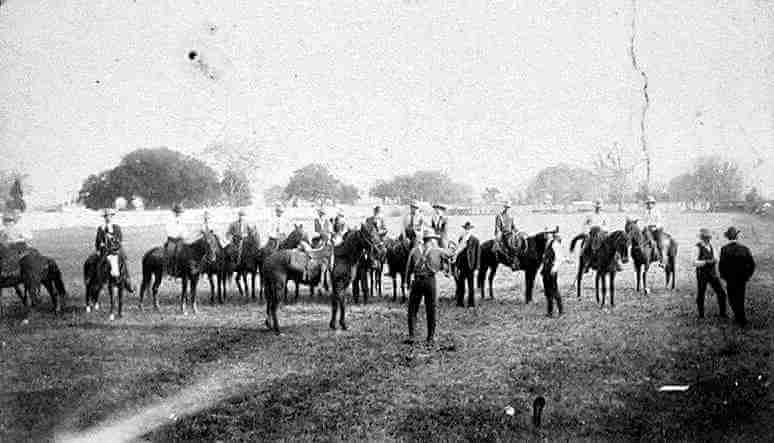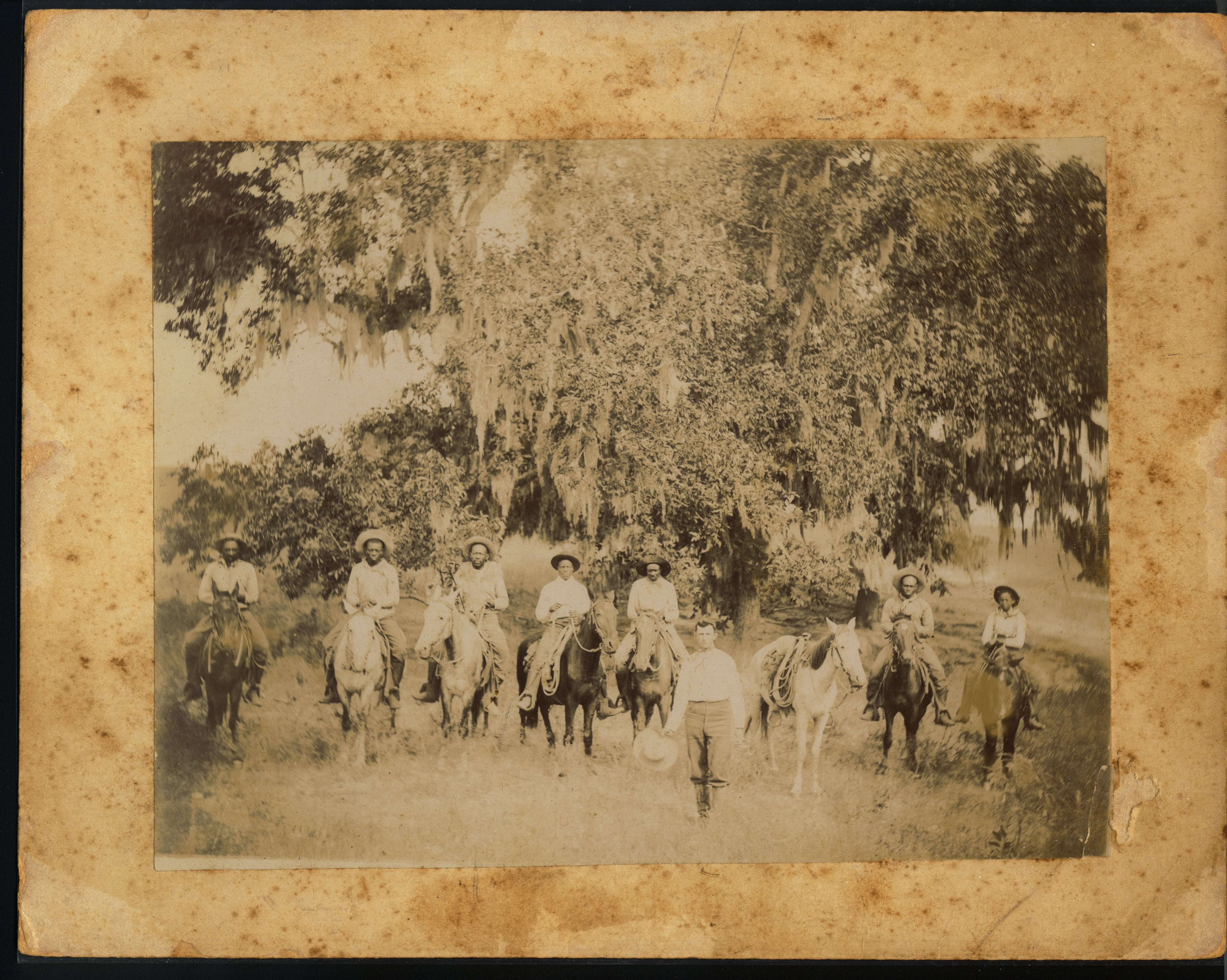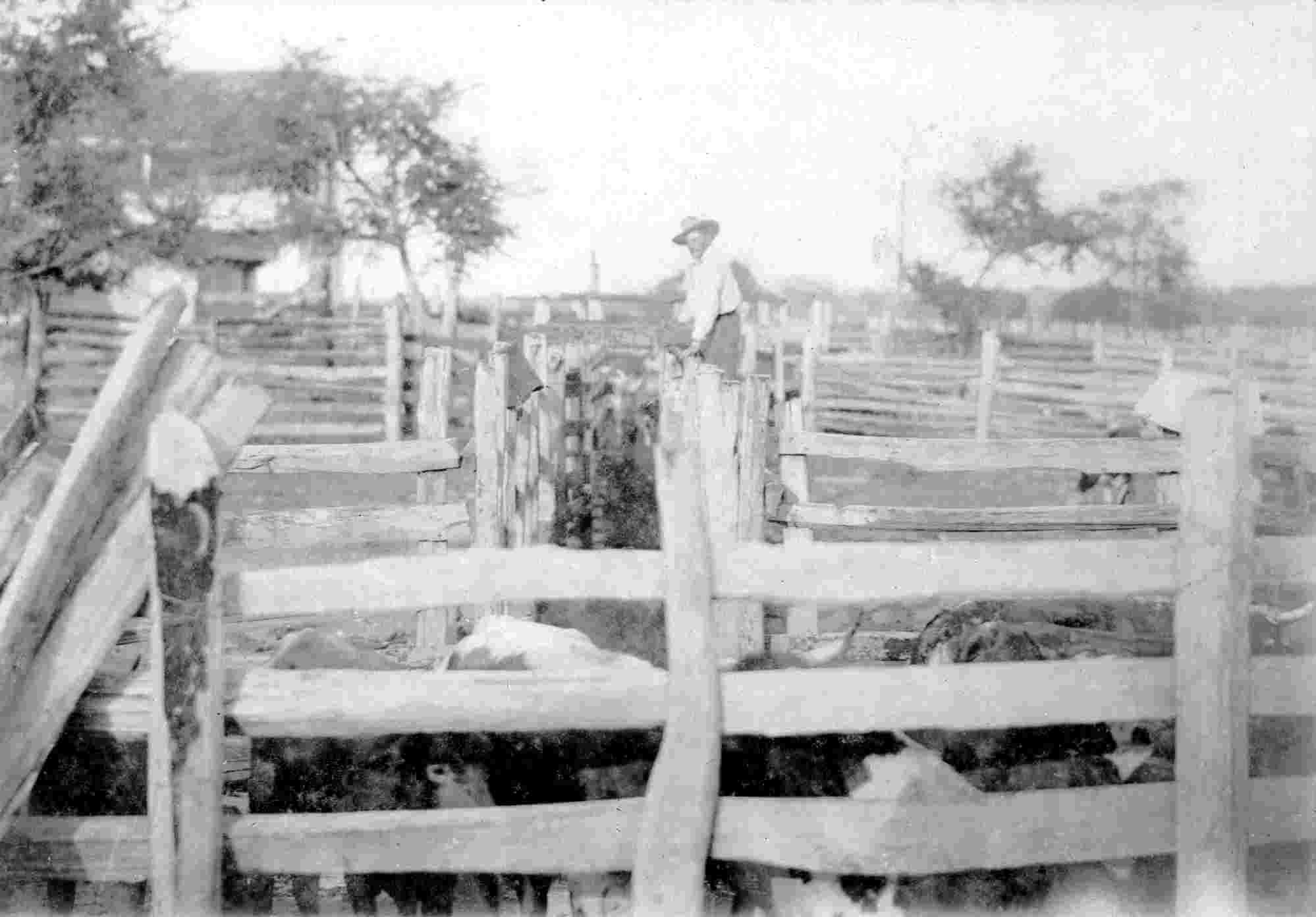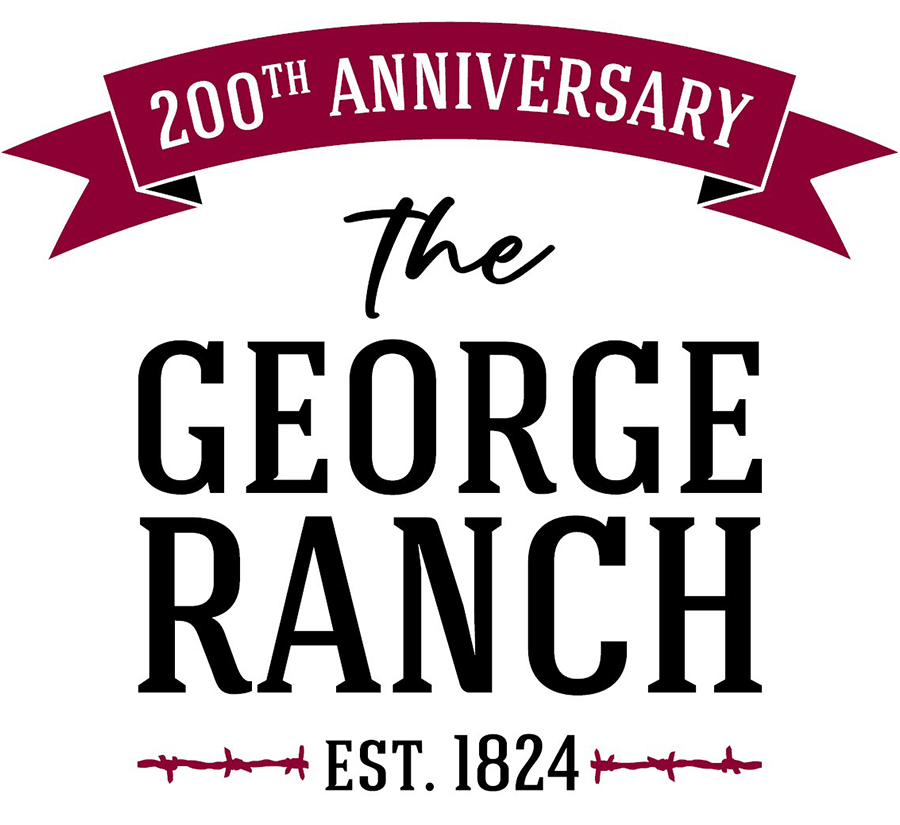Ranch Life: Cow Hunts, Beeves and the History of Cattle Drives
BY SARAH LERCH
George Ranch Historical Park Intern
Tomorrow, the George Ranch Historical Park will recreate a centuries-old tradition—rounding up cattle and bringing them to market!
Roundups

A round-up in the 1890s. (Fort Bend County Museum Association collection.)
Traditionally, a roundup (or “cow hunt”) was held over a period of several weeks from late spring to early summer and again in the fall. Henry Jones, who first claimed the family land in 1824, began what would become a successful farming and ranching operation. His land holdings totaled 4,428 acres—almost seven square miles! When the family first came to Texas (then Mexico) there were no towns or houses, just wide open spaces, grass as tall as a man, native longhorns, and all the pork one could eat! Since cattle belonging to the Jones family, as well as other local ranchers, all ran together, it was necessary to have an annual roundup to separate the herds and brand the calves to document ownership.
These roundups required a robust labor force. The Jones family hired young men, mostly sons of local ranching families, to help during roundup. Walter W. Little, Samuel Wheat, Robert Hill, and George Little all worked for the family in the late 1850s, during peak cattle-driving times. (Several of the young cowboys even married into the Jones family!) Cowboys, both slave and free, worked together to ride over the open prairie to locate and drive all roaming cattle into pens. Once the cowboys had gathered the cattle into the pens, they would separate them based on brand, indicating ownership, and then brand the mother’s calves with the same marking. A less extensive roundup was held again in the fall to catch and brand calves missed in the spring. In 1825, Jones registered 7,000 head of longhorn cattle, branded with Henry Jones’ HJ brand, for a total value of over $85,000.
Cattle Drives

Cowboys in the 1880s. (Fort Bend County Museum Association collection.)
Cattle drives, a major economic activity involving the movement of herds of cattle for money, usually followed the roundups. In addition to branding, the cowboys separated the market-age steers (called “beeves”) to be sold. There was a local market in Richmond for beef, but more advantageous prices were in New Orleans and further east.
Cattle could be shipped by steamer from Galveston or driven over land on trails to reach New Orleans. Drives usually started in early spring, with herds oftentimes numbering in the thousands. Moving at a pace of about 10 to 12 miles a day, the drives took three to four months. There were set routes and trails that the cowboys tried to follow, but access to water, availability of feeding grass, and weather could alter routes at any time. Cattle drives were extremely dangerous and risky business as both cattle and men were exposed to the elements and wild animals, while crossing difficult terrain. It was easy to lose money on a drive if cattle became sick, injured, or died.
Cattle during Henry Jones’ time were primarily raised for their hides and tallow. The cattle booms of the late 1850s to 1880s placed a higher demand for beef cattle. Polly Ryon followed in her father’s footsteps and continued growing the commercial ranching business. Between 1870 and 1900, the Ryon Ranch received on average $16.56 for its beeves, the highest price being $25, almost double what Henry Jones made in the 1840s.
Trails to Rails

Cattle pens and the dipping vat in the 1890s. (Fort Bend County Museum Association collection.)
Shipping and selling of cattle occurred year round, but was mostly concentrated between April and November, with roughly half of the cattle going to market in May, July, and October. Resumed railroad construction after the Civil War opened direct rail connections to a larger cattle market in the North and East. By the 1870s, Fort Bend County had two rail lines and by 1887, trains operated from Galveston directly to Kansas City.
As railroads expanded to cover most of the nation and meat packing plants were built closer to major ranching areas, long cattle drives to railheads became less profitable and unnecessary. Additionally, cattle prices began to fall in late 1884 to an average of $15 a head, and did not recover. The 1884 drive of Ryon cattle was the last year of large overland drives to market; following years would see a preference for railroad shipping.
End of the Open Range
The expansion of the cattle industry in the 1880s resulted in the need for additional open-range areas to graze more cattle. The development of barbed wire used by ranchers to enclose their property modernized ranching practices in Texas and effectively closed off the open range. J.H.P. Davis purchased wire to fence about 1,500 acres of pasture land in the late 1880s. Despite the prevalence and acceptance of barbed wire among ranchers, the Ryon Ranch only closed off roughly one-third of their total land. The remaining pastures at the Ranch remained unfenced through the end of the 19th century.
Organized roundups continue to be an annual event here at the George Ranch, and we encourage you to come experience historic roundups and learn more about cattle drives! Our fall cattle round-up will take place at 11 a.m. and 2 p.m. and is free with general admission. For more information about the event, click here.



